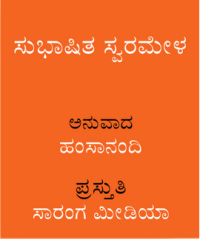Today’s 9/27/2014. The fourth day of Navaratri. In the first three days of this Navaratri, I wrote about a music composition of Syama Sastry, Muttuswamy Dikshita and Tyagaraja, who are popularly called the Trinity of Karnataka Sangeeta and then shared with you links for those compositions being played on a “Veena”. And no prizes for guessing today’s post will be on similar lines!
In the 18th and 19th centuries, when the British had taken over most of the princely states under their arms, only two major kingdoms had remained, albeit under reduced strength. The Wodeyars of Mysore and the Kings of Travencore ( Thiruvananthapuram) continued to be great patrons of music, dance and other art forms. In some cases, the rulers were artists themselves.
Thiruvanathapuram is well known for the chamber concerts at the Navaratri Mandapam, adjacent to the famed Padmanabhaswamy temple. A special feature feature of these concerts is that unlike most other concerts, the main item presented on each day of the music festival is known in advance. The artist of the day elaborates a composition of Maharaja Swathi Tirunal from what is called the Navarati kritis. Each of these compositions is in Samsktra and set in rakti ragas such as Bhairavi, Shankarabharana, Natakuranji, Kalyani etc. I’d written about these compositions earlier during a previous Navaratri series. You can read them here.
Maharaja Rama Varma is better known by his star name – Swathi Tirunal, In a short span of 33 years (1836- 1846 AD) he accomplished a lot musically. He was a Veena player as well. Unlike other composers who had their students spread the compositions across the country, his compositions remained known only in Kerala for quite some time. Also, for some of his compositions nothing but the raga and tALa names were known, and were tuned by later day musicians. In the 20th century his compositions become popular outside Kerala, and now have become a part of the standard concert repertoire.
Swathi Tirunal adapted some Hindustani ragas into Karnataka sangeeta as well – and thus the Raga Hamsanandi was born from Sohini. The composition I’m sharing today, pAhi jagajjanani is in this raga – Listen to this played on electric guitar by Abhay. The Guitar, although a western instrument falls in the class of what has been traditionally called a “Veena” in India.
Interestingly enough, Guitar Abhay has not changed the way the guitar is traditionally tuned. He is a student of Mandolin Shrinivas whom we lost recently. It’s but a sad coincidence, both Swathi Tirunal and U Shrinivas had short lives , but they sure have touched many hearts in their lifetime and will continue to do so much beyond their life time.
Now over to Guitar Abhay’s magical fingers, playing pAhi jagajjanani in rAga hamsAnandi:
Happy listening!
-neelanjana




4 comments
Comments feed for this article
ಸೆಪ್ಟೆಂಬರ್ 28, 2014 at 7:32 ಫೂರ್ವಾಹ್ನ
narendra
Why no app for non itunes custome
Srs
LikeLike
ಸೆಪ್ಟೆಂಬರ್ 28, 2014 at 3:55 ಅಪರಾಹ್ನ
Dr.G.N. Mohan Kumar, Professor, Washington State University, Pullman, WA 99163
I would like to have the contact info of Hamsanandi. I would appreciate this info. Thanks
LikeLike
ಸೆಪ್ಟೆಂಬರ್ 28, 2014 at 11:28 ಅಪರಾಹ್ನ
Nine Nights: Day 5 | ಅಲ್ಲಿದೆ ನಮ್ಮ ಮನೆ
[…] for a while where he gave second life to some of Swathi Tirunal’s compositions. Some of Swathi Tirunal‘s compositions which had lost their original musical form were retuned by Muttaiah […]
LikeLike
ಅಕ್ಟೋಬರ್ 1, 2014 at 6:11 ಅಪರಾಹ್ನ
Nine Nights: Day 8 | ಅಲ್ಲಿದೆ ನಮ್ಮ ಮನೆ
[…] for Muttaiah Bhagavatar during his stint in Mysore as the Asthana Vidwan. Then there are cases of Swati Tirunal‘s compositions being re-fitted with music by Muttaiah Bhagavatar, and later by Semmangudi […]
LikeLike